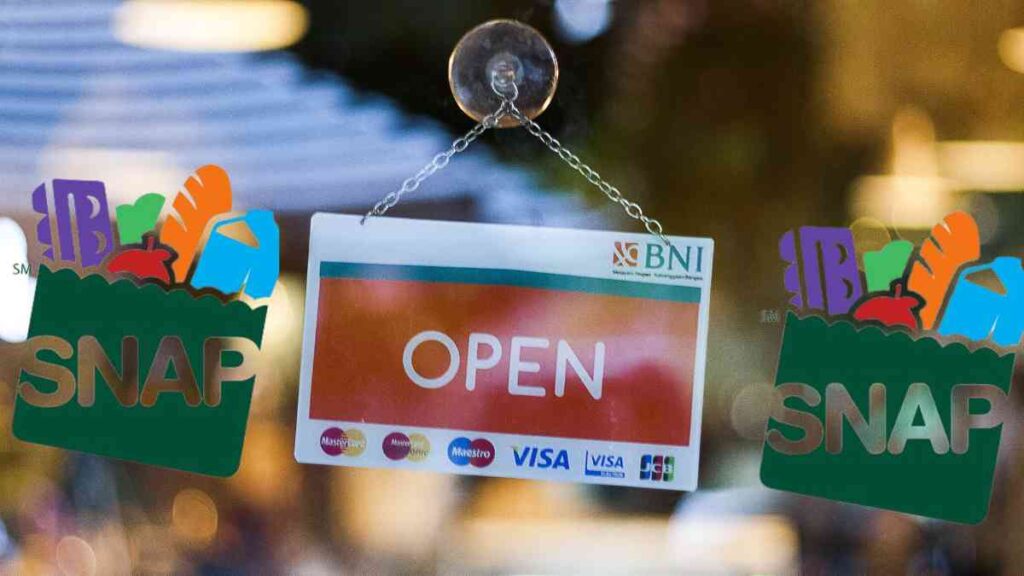A great deal of Food Stamp recipients are not receiving the correct amount of Supplemental Nutrition Assistance Program (SNAP) benefits. That is what recent data from the United States Department of Agriculture’s (USDA) Food and Nutrition Service (FNS) unveiled.
Throughout the United States, millions of households are experiencing issues with being either underpaid or overpaid in their SNAP benefits. As a matter of fact, the overall Food Stamp payment error rate for the 2023 fiscal year was 11.68 percent.
Error rates of SNAP overpayments and underpayments
This includes an overpayment rate of 10.03 percent and an underpayment rate of 1.65 percent. These errors occur when state agencies incorrectly certify a family or individual, resulting in either too much or not enough Food Stamps benefits being allocated. Errors are primarily due to inaccuracies in how states determine eligibility and benefit amounts, rather than fraud, according to the FNS.
The root cause of these errors lies in the complexities of state agencies’ processes for determining eligibility and calculating benefit amounts. These inaccuracies can lead to significant discrepancies in the benefits that millions of Americans rely on for their daily nutrition needs.
Ensuring accurate SNAP benefits is crucial for the well-being of many American families. Understanding these errors and their causes can help us advocate for better processes and more reliable support systems.
When it comes to underpayments, Washington D.C. tops the list with a rate of 4.58 percent. Following closely is Maryland at 3.91 percent, then Delaware at 3.57 percent, and finally Maine at 3.41 percent.
Overpayments More Prevalent Than Underpayments
Interestingly, the data reveals that overpayments are significantly more common than underpayments.
States with the Highest Overpayment Rates
Alaska leads the way with an astonishing rate of 59.59 percent in overpayments. New Jersey follows as the second highest at 33.43 percent.
Understanding SNAP Benefits
Food Stamps benefits are crucial government-provided payments aimed at assisting low-income individuals and families in the U.S. These benefits help them purchase essential food items and other sundries, thereby supporting their households.
The Supplemental Nutrition Assistance Program (SNAP) plays a vital role in supporting families across the nation. Funded by the federal government and distributed by state and local authorities, SNAP benefits are loaded onto Electronic Benefit Transfer (EBT) cards each month, allowing recipients to purchase food at participating stores.
The Importance of Accurate SNAP Payments
“SNAP is a cornerstone of our nation’s safety net, and accurate benefits are crucial for families in need and for public trust,” said Cindy Long, the administrator for the Food and Nutrition Service (FNS), in a press release available at https://www.fns.usda.gov/.
Long emphasized that high error rates in SNAP payments are unacceptable. “We cannot tolerate high error rates in a program that impacts millions of lives. States must take immediate action to improve the accuracy of Food Stamps payments—or they will face financial penalties.”
Federal Efforts to Enhance SNAP Payment Accuracy
The United States Department of Agriculture (USDA) is actively seeking to enhance the accuracy and integrity of Food Stamps payments. In the president’s FY25 Budget, the USDA has requested funds to:
- Improve SNAP payment accuracy
- Enhance program integrity
- Provide funding for quality control
- Upgrade computer systems
- Establish a new Office of Training and Development
These initiatives underscore the federal government’s commitment to ensuring that SNAP benefits are distributed accurately and efficiently, reinforcing the program’s role as a critical safety net for millions of Americans.
What are the specific income limits for SNAP benefits based on household size?
The federal government sets the income limits for SNAP. They update them every year on October 1st. The limits are based on a percentage of the Federal Poverty Level (FPL).
Households must meet both gross and net monthly income limits to qualify for SNAP. The gross monthly income limit is set at 130% of the FPL, while the net monthly income limit is set at 100% of the FPL.
The period is October 1, 2023, through September 30, 2024. The limits are as follows:
| Household Size | Gross Monthly Income (130% FPL) | Net Monthly Income (100% FPL) |
|---|---|---|
| 1 | $1,580 | $1,215 |
| 2 | $2,137 | $1,644 |
| 3 | $2,694 | $2,072 |
| 4 | $3,250 | $2,500 |
| 5 | $3,807 | $2,929 |
| 6 | $4,364 | $3,357 |
| 7 | $4,921 | $3,785 |
| 8 | $5,478 | $4,214 |
| Each additional member | +$557 | +$429 |
Some states have expanded categorical eligibility for SNAP using a higher gross income limit of 200% of the FPL. However, households must still have a net income at or below 100% of the FPL to qualify.
Allowable deductions are subtracted from gross income to find a household’s net monthly income. These deductions include a 20% earned income deduction. They also include a standard deduction based on household size. They cover dependent care costs, legally owed child support, and excess shelter costs.
